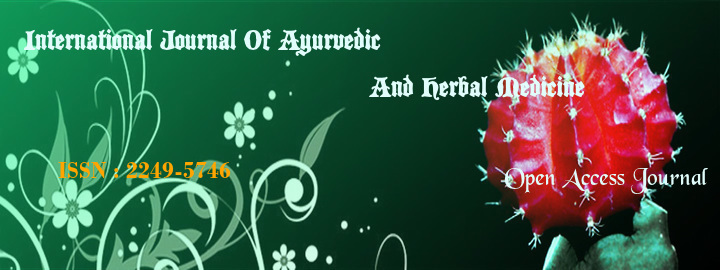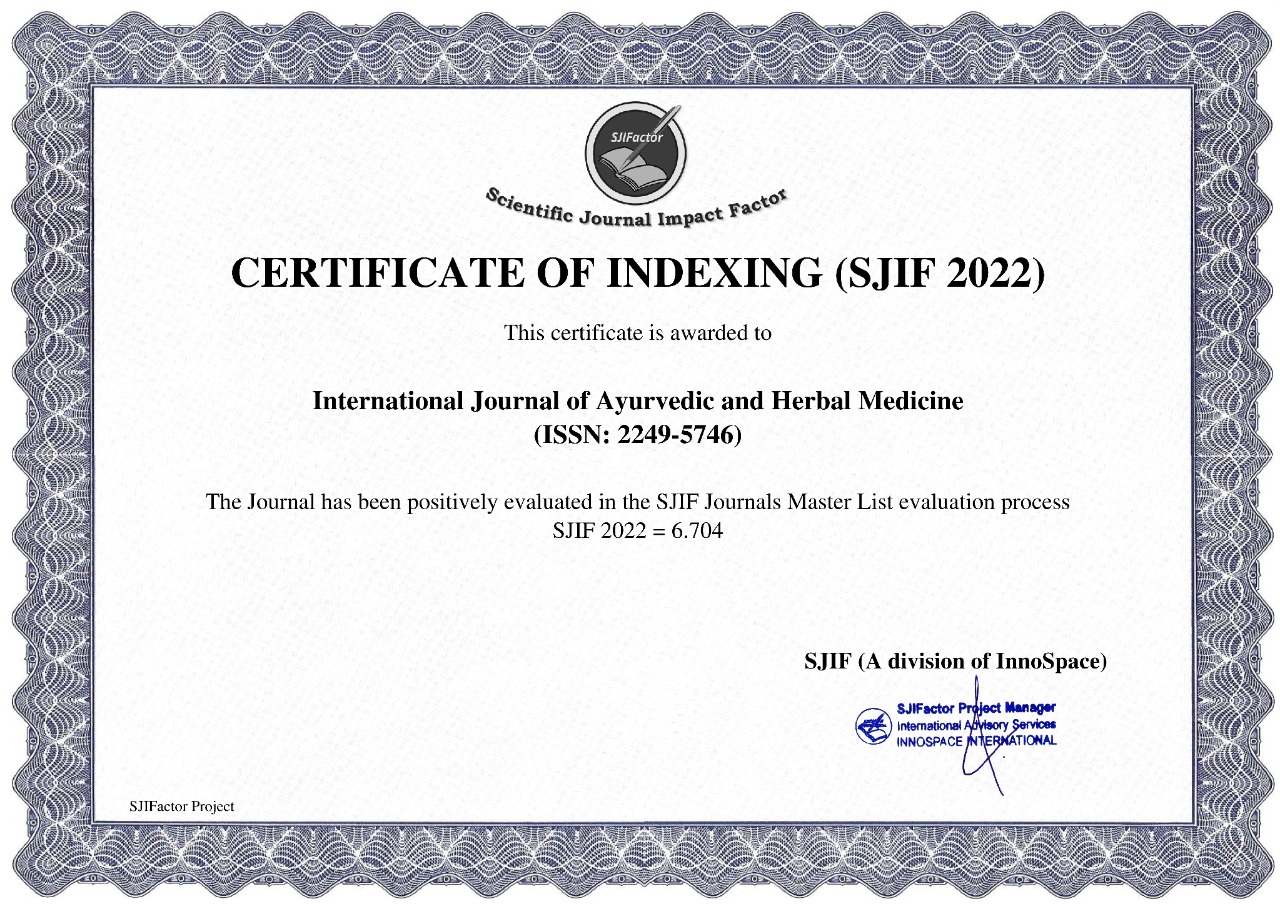


Dr Jai Kini
( Ph D MD Rognidan & Vikrutividnyan) Associate Prof. YMTAMC Kharghar Navi Mumbai
Abstract
In present scenario, the food habits, food contents, life style are changing very rapidly which are the maintained causative factor for annapachan vikruti and the persistence of the same factor denotes the maintenance of the diseases of the system which denotes the permanent damage of the organ. According, charaka chikita sthaan 15, all types of diseases initiated by the annavahasrotas vikruti and well explained the chikitsa according the minute differences in diagnosis of the type of this srotas vikruti. The Study of exact role, pattern and reflection of pathological results in annavaha srotas dushti is going to helpful which plays important and socially significant role to control all diseases globally. Designed CRF& selected 644 patients from annavahasrotas dushti more than 1 year & categorized by ayurvedic classification .CBC, ESR, URINE routine , microscopic, electrolyte Na, K, Cl performed and recorded. In arochak(38.75%) Vatapittaj prakruti predominately with HB% , RBC low(91.66%),in urine epithelial cells casts(79.66%), serum Na higher side (83.23%).Annanabhilasha (16.87%) kapha pradhan prakruti with low MCHC (89.45%), in urine pus cells significantly, albumin traced (84.44%)serum electrolyte (Cl) is lower side( 35%).Avipaka (20.62%) pitta pradhaan prakruti urine microscopic RBC(76.55%) ,occult blood traced, calcium oxalate seen (67.22%). serum potassium (K+) is less(77.22%), protein present, ,In Amlapitta ,Twakdushti seen in 89% of patients, Mansavaha srotas vikruti &daha in 67.55% . Chardi is seen in only 4 patients (2.5%.).Arochak shoola shows epithelial cells , casts in the urine, microcytic hypochromic anemia, high Serum sodium .Avipaka amlapitta shows occult blood , calcium oxalate , RBC in urine, lower serum potassium. annanabhilasha shows leucocytosis and high ESR, pus cells in urine , raised specific gravity & proteinuria. lower serum chloride
Keywords:
Annavaha srotas, annannabhilasha, avipaka
References
1. BODINSKY, GRETCHEN RN, BS, CGC Fluid and Electrolyte Balance and the Patient with a Digestive Disorder. Fluid and Electrolyte Balance and the Patient with a Digestive Disorder. The Society of Gastroenterology Nurses & Associates 1989 volume 12, issue 3
2. A Hinsberger, BK Sandhu - Elsevier digestion and absorption Current Pediatrics, 2004 –
3. KD Haydon, JW West - Journal of animal science, 1990 - dl.sciencesocieties.org effect of dietary electrolyte balance and nutrients in small intestine
4. MS Steiner, RA Morton - the Urologic clinics of North America, 1991 - europepmc.org Nutritional and gastrointestinal complication of the use of bowel segments in the lower urinary tract
5. KW Beyenbach - mechanism and regulation of electrolyte in malphigen tubule. Journal of Insect Physiology, 1995 – Elsevier
6. Carol Bucking, Chris M. Wood Gastrointestinal processing of Na+, Cl−, and K+ during digestion: implications for homeostatic balance in freshwater rainbow trout American Journal of Physiology - Regulatory, Integrative and Comparative Physiology Published 1 December 2006 Vol. 291 no. 6, R1764-R1772 DOI: 10.1152/ajpregu.00224.2006
7. Ambika Dutta Shashtri Chaukhamba Sanskrit Sansthan Varanasi Susrut Samhita I & II1997
8. Dr. Gorakshnath ChaturvediPt. Kashinath Shashtri Chaukhamba Varanasi Charak Samhita 2000
9. Harshmohan J.B. Publisher Delhi Textbook of Pathology1995
10. Charak samhita Vidyotini Tika Shri satyanarayan shastri Chaukhambha Academy 21st Editio1995
11. Ayurvediya Vyadhivinischay Pracharya Anant Damodar Athavale Shriradha Damodar Pratishthan pune
Charaksamhita of agnivesha Edited By yadavji trikamji Acharya Munshiram Manoharlal Publishers Pvt. Ltd. FifthEdi.1992
index























